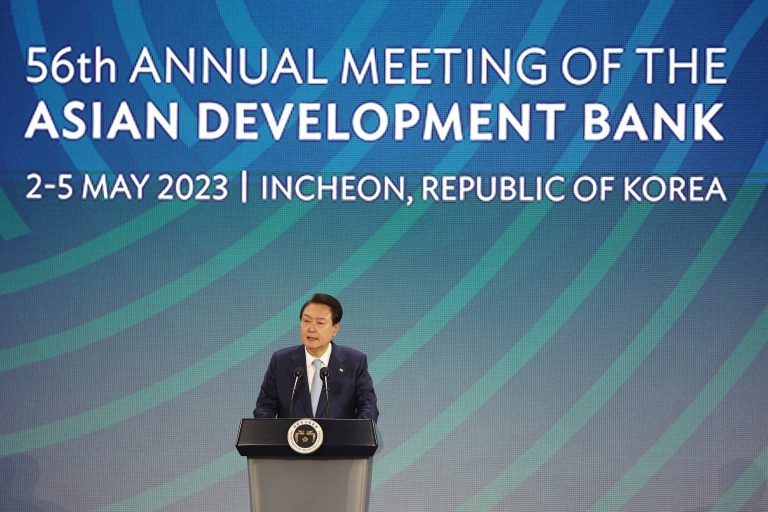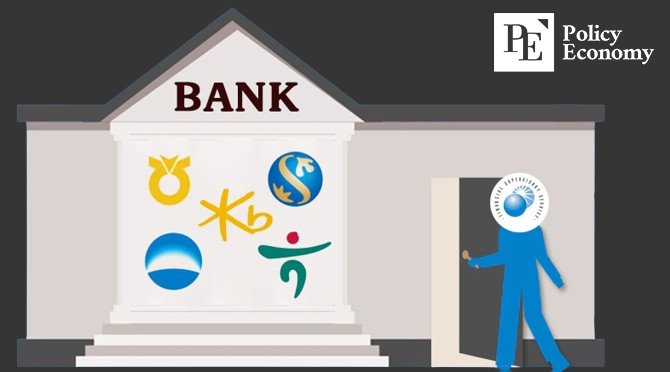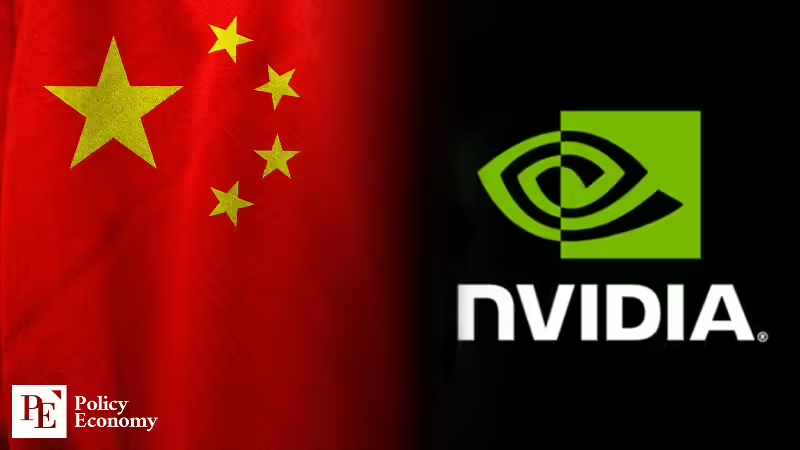[동아시아포럼] 한국, 중국의 경제적 압박에 반기 들다
한국, 중국 경제적 압박 벗어나고자 리쇼어링 등 다양한 노력 중 중국의 정치적 경제 보복, 한국에 대한 핵심적 연결고리 끊었다 국 강압적 정책 추이 주목하며 철저히 대비해야
[동아시아포럼]은 EAST ASIA FORUM에서 전하는 동아시아 정책 동향을 담았습니다. EAST ASIA FORUM은 오스트레일리아 국립대학교(Australia National University)의 크로퍼드 공공정책 학교(Crawford School of Public Policy) 산하의 공공정책과 관련된 정치, 경제, 비즈니스, 법률, 안보, 국제관계 및 사회에 대한 분석 및 연구를 위한 플랫폼입니다.
저희 폴리시코리아(The Policy Korea)와 영어 원문 공개 조건으로 콘텐츠 제휴가 진행 중입니다.
윤석열 한국 대통령의 최근 방미 과정에서도 강조됐듯이 한국은 태평양을 둘러싼 미국 동맹의 핵심 구성원입니다. 하지만 중국의 이웃이자 중국의 일부 핵심 산업 부문을 보완할 수 있는 국가이기도 한데, 덕분에 그동안 중국의 경제적 압박에 시달려 왔습니다.

제2차 세계 대전 이후 독일 출신 경제학자 앨버트 허시만(Albert Hirschman)은 겉보기에는 문제가 없어 보이는 양자 무역 관계가 비대칭적 상호 의존성으로 이어질 수 있다고 주장했습니다. 즉 강대국이 무역 관계를 이용해 다른 나라에 정치적 영향력을 행사할 수 있다는 뜻인데요, 요즘 중국이 하려는 일이 바로 이것입니다. 허시만은 이러한 비대칭적 관계가 궁극적으로는 국제 체제를 파멸시킬지도 모른다고 주장했습니다. 하지만 현재 상황은 그렇게까지 심각하진 않습니다.
중국 분석에 집중하는 독일의 싱크탱크 메릭스(MERICS, Mercator Institute for China Studies)에 따르면 2010년 2월부터 2022년 3월까지 중국이 자행한 일방적인 제재 혹은 제재 위협(외국 기업에 대한 보이콧, 행정적 차별, 방어적인 무역 조치, 무역 제한 및 여행 제한 등) 사례는 무려 123건에 달합니다.
중국의 이러한 압박은 한국 경제에 분명한 타격을 입혔지만, 한국은 중국 의존도를 줄이는 데 어느 정도 성공했습니다. 한국 기업과 정책 입안자들이 리쇼어링(reshoring, 해외로 진출한 기업이 본국에 돌아오는 것)과 온쇼어링(onshoring, 리쇼어링과 유사한 개념, 해외 기업 유치 등을 포함)을 통해 경제적 독립성과 주권, 내수 시장의 회복력을 강화하고자 노력해 왔기 때문입니다. 이는 특히 지금까지 대(對)중 의존도가 높았던 소매 및 반도체 분야에서 두드러집니다.
한국 기업이 경제 외적인 이유로 중국의 압력을 받은 가장 직접적인 사례는 롯데그룹입니다. 롯데그룹은 지난 2007년에는 롯데마트, 2008년에는 롯데백화점 중국 매장을 설립하면서 중국에 진출했습니다. 이후 롯데마트 총 112개, 롯데백화점 총 5개를 세우며 사업을 확장했지만 2016년 사드(THAAD, 고고도미사일방어체계) 사태로 큰 피해를 봤습니다. 롯데가 사드 배치를 위한 부지를 제공했기 때문입니다. 분노한 중국 정부는 롯데마트와 롯데백화점 매장 대부분에 영업정지 등 강력한 처분을 내렸습니다. 롯데쇼핑에 따르면 이 사태로 인한 손실 추정액은 무려 1조2,000억원에 이릅니다. 결국 롯데그룹은 중국에서의 마트와 백화점 사업을 완전히 중단했습니다(마트 2018년, 백화점 2022년).
이 사건은 중국 정부의 원초적인 권력 행사였지만 외교 정책 수단으로서 강압이 갖는 한계를 여실히 보여줬습니다. 중국은 롯데를 응징하고 점포를 폐쇄하며 강력한 분노를 효과적으로 표현했지만, 그로 인해 한국에 대한 어떤 핵심적인 연결고리가 사라졌습니다. 롯데그룹이 실질적인 손실을 보기는 했지만, 대통령 고문직을 맡은 한국의 한 학자에 따르면 애초에 ‘극소수의 해외 소매 업체’만이 중국에서 ‘수익성 있는 사업’을 운영해 왔습니다. 한국 정부는 롯데의 중국 철수를 말리지 않고 오히려 동남아 이전을 지원했습니다. 한국 국민의 반중 정서 역시 엄청나게 강해졌습니다.
반면 반도체 분야에서는 같은 전략이 그렇게 효과적이지 않았습니다. 동아시아는 단계적인 반도체 생산의 요지인데, 한국의 칩 제조업체는 업계 최첨단 기술인 업스트림 부문을 포함해 전 세계 생산량의 약 20%를 차지합니다. 하지만 중국 기업은 다운스트림 부문에서 활동하며 한국에서 수입된 부품에 크게 의존하고 있습니다. 중국은 반도체 분야가 한국 기업을 포함한 외국 기업에 대한 중국 정부의 영향력을 줄이는 ‘관문 기술’임을 알고 있습니다.
한국의 칩 제조업체는 중국에 상당한 투자를 했습니다. 어떤 지역에서는 최대 고용주에 등극할 정도죠. 만약 중국 정부가 한국 칩 제조업체에 보복 위협을 가한다면 자국민의 실직과 자국의 반도체 생산 감소라는 결과가 돌아올 것입니다. 한편 SK그룹과 같은 주요 업체들은 미국과 그 동맹국에 대한 중국의 보복에 대비하고자 미국 투자를 확대하고 공급망 구조 조정 협력을 할 예정입니다. 이른바 ‘칩 동맹(Chip Alliance)’에 합류하는 것입니다.
중국의 압력이 한국 기업에 경제적인 혼란을 가져다주고, 한국과 미국의 경제적 동맹이 공급망 구조 조정 비용을 부담하게 했다는 건 부정할 수 없는 사실입니다. 하지만 한국, 그리고 비슷한 상황을 겪었던 호주는 중국에 고개를 숙이지 않고 그 비용을 받아들였습니다. 많은 것을 생각하게 만드는 대목이죠.
중국은 그간 비대칭적 상호의존을 국정 운영 수단으로 사용했지만 이는 제한적인 성공을 거두었습니다. 일대일 이니셔티브로 글로벌 금융 시장에서 더 큰 권력을 휘두르겠다는 시도도 난관에 봉착했습니다. 한국 같은 표적 국가들이 중국의 강압에서 벗어나고자 신속히 움직이고 있다는 것은 국제 무역의 정치에 대한 허시만의 진단에 힘을 실어줍니다.
몇몇 이들은 허시만의 논리에 따라 중국이 다른 국가와의 힘겨루기를 통해 ‘길들여질’ 수 있다고 주장합니다. 즉 중국도 역으로 다른 압력을 받고 변화할 수 있다는 건데, 그렇게 된다면 중국의 강압적인 정책은 중단되거나 그 빈도가 줄어들 것입니다. 반면 일부는 중국이 다른 국가가 보내는 ‘신호’를 읽지 못하고 있다고 생각합니다. 자신의 행동에 다른 국가가 어떻게 대응하는지와 관계없이 압력을 행사할지도 모른다는 뜻입니다. 따라서 한국이나 호주처럼 중국의 영향을 크게 받는 국가는 중장기적으로 두 가지 시나리오에 모두 대비해야 합니다.
South Korea pushes back against Chinese economic coercion
South Korea has been in the firing line of Chinese economic coercion. Like Australia, the East Asian nation is a key member of the US alliance in the Pacific, whose role as a like-minded member of the rules-based order was emphasised during President Yoon’s recent trip to the United States. As a neighbour of China and with an economy complementary to some of China’s core industrial sectors, South Korea has been one of the most prominent targets of Beijing’s economic coercion tactics. But this is not without precedent.
In the aftermath of WWII, economist Albert Hirschman contended that ‘seemingly harmless’ bilateral trade relations can create asymmetric interdependence. Asymmetry leads to reliance which can result in political domination, particularly by great powers. A modern-day version of this is China’s attempts to extract political and strategic advantage from its trade relations. But while Hirschman believed that the international system may ‘contain the seeds of its own destruction’, contemporary facts suggest otherwise.
Between February 2010 and March 2022, one group of analysts identified 123 cases of China imposing — or threatening to impose — unilateral sanctions such as boycotts, administrative discrimination, defensive trade measures, trade limitations and travel restrictions on foreign entities.
While Chinese coercion has taken its toll on the South Korean economy, its unintended consequences have prompted South Korea to reduce its exposure to China, even if this entails some real costs. South Korean firms and policymakers have sought to strengthen economic independence, sovereignty and domestic resilience through reshoring and onshoring. This is evident from the experience of two sectors that had been hitherto highly exposed to China — retail and semiconductors.
The Lotte group and its chain of department stores it once operated in mainland China are the most direct example of a South Korean firm being subjected to Chinese coercion for non-economic reasons. Lotte is often referred to as ‘the biggest loser’ of the Terminal High Altitude Area Defense (THAAD) affair, in which Beijing expressed outrage at Seoul’s decision to deploy a US-made anti-ballistic missile system in 2016. Lotte also sold the land needed for THAAD. As retribution, most of its stores in China were subjected to regulatory suspensions, resulting in plummeting sales and losses of up to AU$1.3 billion. By 2018, the chain had exited China.
The Lotte case was an exercise of raw power by the Chinese government, but it also demonstrates the limits of coercion as a foreign policy tool. In punishing Lotte and causing its closure of stores, China’s measures eliminated a key source of leverage over South Korea. While there were real losses for the company, a South Korean academic and presidential advisor noted that ‘very few foreign retailers’ have ever ‘run profitable operations’ in China. Tellingly, the South Korean government did not dissuade Lotte from leaving China, but instead supported its relocation to Southeast Asia. The incident also tarnished South Korean public sentiment towards China.
If China’s coercion achieved its goal of inflicting economic harm on South Korea in the retail sector, the tactic has been less successful in semiconductors. East Asia is the hub for the multiphase creation of semiconductors and South Korean chipmakers account for about 20 per cent of global production, including some of the industry’s most cutting-edge, upstream segments. Chinese firms, by contrast, are involved in downstream segments and rely heavily on imported components from South Korea. Beijing is aware that semiconductors are a ‘chokepoint technology’, which can reduce the capacity of the Chinese government to target foreign firms, including South Korean ones.
South Korean chipmakers have made substantial investments in China and are the single biggest employers in some provinces. Any threat of retaliation against South Korean chipmakers would rebound in the form of job losses and reduced production of Chinese semiconductors. Important players like the SK Group are set to join the so-called ‘chip alliance’ through increased investment in the United States and cooperating on supply chain restructuring, intended to further impede Chinese retaliation against the United States and its allies.
Chinese coercion has undoubtedly caused economic disruption to South Korean firms, and South Korea and US-aligned economies will pay the costs of restructuring supply chains. Yet the fact that South Korea and Australia chose to accept these costs rather than acquiesce to coercion speaks volumes.
While China has resorted to asymmetric interdependence as a method of statecraft, this tactic has achieved only limited success. China’s attempt to become a global financier and wield greater power through the Belt and Road Initiative has likewise hit snags. The speed with which targeted states such as South Korea have moved to reduce their exposure to Chinese coercion supports Hirschman’s diagnosis of the politics of international trade.
Although the limits to economic coercion have been exposed in South Korea, this form of statecraft will not necessarily be set aside. While some, following Hirschman’s logic, think Chinese power can be ‘tamed’ through interactions with other powers, meaning coercion might cease or become less common, others think that China is failing to read the signals sent by other states. This suggests that coercion may remain a temptation for future Chinese leaders. States such as Australia and South Korea would be wise to prepare for both scenarios as they look to the decades ahead.



























